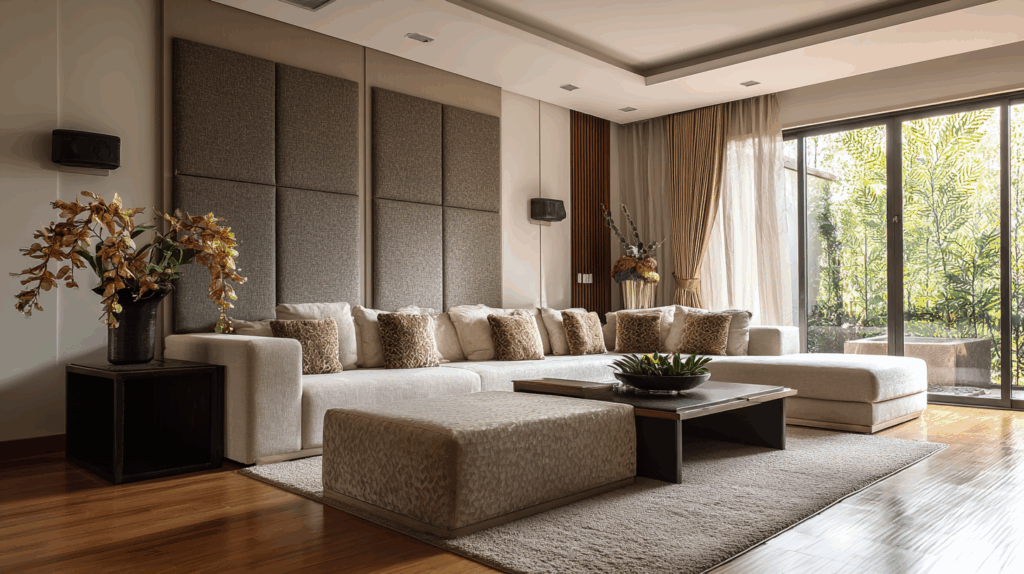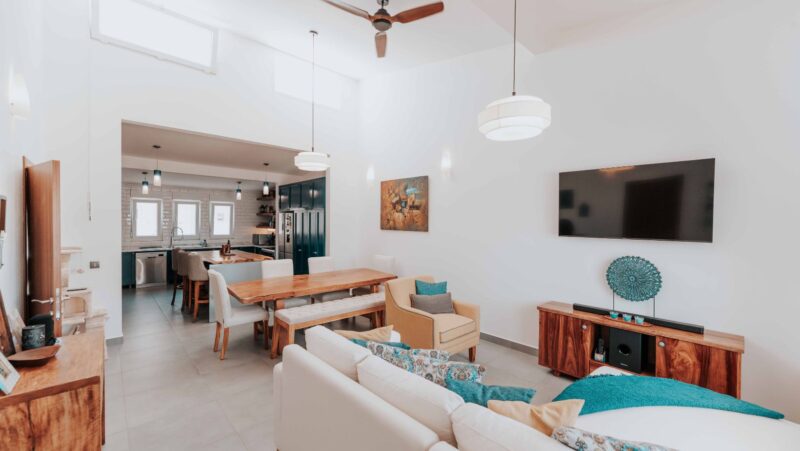Protecting Your Home from Neighborhood Noise Pollution

The modern neighborhood isn’t always as peaceful as it looks. Between the rumble of passing cars, the constant hum of leaf blowers, and the thud of construction equipment, finding quiet inside your own home can feel impossible. Noise pollution isn’t just annoying — it takes a real toll on your mood, sleep, and ability to relax. Even low, steady background noise can make you feel tense without realizing why.
The problem is that noise doesn’t stop at your property line. It slips through thin walls, seeps in around windows, and vibrates through floors and ceilings. Before you know it, the sounds of other people’s lives have invaded yours. That’s where acoustic sound panels come in. They’re one of the most practical ways to reclaim your peace without tearing down walls or replacing windows. These panels absorb echoes and reduce the intensity of outside noise, turning chaotic sound into quiet comfort. With the right setup, you can finally create a sanctuary that feels calm no matter what’s happening outside.
Common Sources of Neighborhood Noise
Every neighborhood has its own soundtrack — and not always the pleasant kind. Some noises come and go, others are constant, but they all have one thing in common: they make your home feel less private.
Street traffic and highways are among the worst offenders. The steady hum of engines, the sudden whoosh of trucks, or the late-night roar of a motorcycle can easily cut through your walls.
Construction and landscaping crews are another major source. Power tools, jackhammers, lawnmowers — even short bursts of noise repeated throughout the day can wear you down over time.
Then there are neighbors. Shared walls, weekend parties, early risers, or loud televisions — every lifestyle creates sound that spreads easily in dense neighborhoods.
Barking dogs and outdoor activities add another layer, especially if your windows face backyards or playgrounds. And don’t forget mechanical noise — HVAC units, generators, and nearby businesses that run late hours all contribute to the mix.
Once you identify what kind of noise you’re dealing with, you can start planning real solutions instead of just turning up the TV or buying another pair of earplugs.
Strategic Sound Control Solutions
Reducing noise doesn’t always mean heavy construction or expensive remodeling. It’s about being strategic — identifying weak points, layering solutions, and focusing on areas where you’ll feel the biggest difference.
Identifying Your Weakest Points
Start with a quick walkthrough. Notice which rooms feel the loudest during the day. In most homes, windows are the biggest culprits. Even double-pane glass can let in vibrations and road noise. Shared walls with neighbors often carry sound more than you expect, especially in condos or townhouses.
Rooms that face busy streets or parking lots also tend to be noisier, while thin interior walls inside the home can transmit sound between rooms. Pay attention to floors and ceilings, too — impact noise from above can be just as distracting as sound from outside.
Once you know where the problem areas are, you can focus your efforts for the best results.
Layered Defense Approach
Good sound control is like insulation — it works best in layers. Treat the interior walls that face the source of the noise first. Adding panels there will help absorb vibrations before they travel deeper into your home. Pair them with heavy curtains or soundproof drapes to block direct noise from windows.
Add weatherstripping around doors and windows to seal air gaps. These small openings let a surprising amount of sound leak through. Inside, rearrange furniture to create buffer zones — bookshelves, wardrobes, and large art pieces all help absorb and scatter sound waves.
Finally, remember that there are two kinds of noise to deal with: airborne (voices, traffic, barking) and impact (footsteps, dropped objects). Each needs its own treatment plan, but layered solutions often handle both at once.
Room-by-Room Protection Strategy
Every home has its quiet zones — or at least, it should. Some rooms need silence more than others. When you know where to focus your efforts, you can make small, smart changes that add up to a big difference in comfort.
Bedrooms Need Priority Treatment
If there’s one place where peace and quiet matter most, it’s your bedroom. This is where your mind resets, where rest happens. Constant background noise, even when you think you’ve tuned it out, can stop your body from reaching deep sleep.
Start with the wall that faces the noise source — whether it’s a street, a neighbor, or an alleyway. Add acoustic sound panels or dense fabric wall coverings to absorb incoming sound. Heavy curtains or layered blinds will help seal off the windows.
If you live in an apartment or have neighbors above, consider the ceiling. Even a few strategically placed panels overhead can dull footsteps or muffled voices from upstairs. Combine them with a soft area rug and thick bedding to reduce echo within the room itself. The goal is to create an environment where the sound fades away as soon as you close the door.
Living Areas and Home Offices
Living rooms and home offices deserve just as much attention, especially in homes where work and family life overlap. These spaces often face multiple noise sources — traffic outside, conversations inside, maybe even a TV in the next room.
For home offices, start with the wall behind your desk. That’s usually where sound reflects the most during phone calls or video meetings. Add panels in a clean, grid layout so they double as décor. It not only helps your voice sound clearer on calls but makes the space feel more professional.
In living areas, balance is key. You want better acoustics without losing the warmth of a family room. Mix functional treatments with décor — a rug, curtains, upholstered furniture, and a few panels behind your TV or couch. Even plants help by breaking up sound waves naturally. When everything works together, you’ll feel the difference — conversations are easier, the TV sounds better, and the room feels more relaxed.
Installation and Effectiveness
You don’t need to be a contractor to make your home quieter. With a bit of planning, you can handle most acoustic improvements yourself.
Proper Coverage for Noticeable Results
Soundproofing doesn’t have to be all or nothing. Covering even 20–30% of a noisy wall can dramatically reduce echo and transmission. Start small — one wall, one room — and build from there. Focus on the surfaces closest to the noise source for the biggest impact.
DIY Installation vs. Professional Help
If you enjoy DIY projects, installing acoustic sound panels is straightforward. Many come with adhesive strips or simple mounting hardware. Just make sure they’re firmly secured and evenly spaced. If you’re dealing with persistent or complex noise, like heavy traffic or shared building vibrations, calling a professional might be worth it. They can test where sound enters most and suggest customized fixes.
Measuring Improvement in Noise Levels
Once you’ve made changes, take a moment to listen. Stand in the same spots that used to be the loudest and notice how the sound feels now. You can even download a free noise meter app to measure decibel levels before and after. Seeing those numbers drop gives you real proof your efforts worked.
Combining with Other Soundproofing Methods
Acoustic panels are powerful on their own, but they work best as part of a complete strategy. Combine them with door sweeps, thick rugs, soft furnishings, and sealing small cracks or gaps. Each detail makes your home a little more peaceful — together, they transform it.
You can’t control traffic, barking dogs, or neighbors’ habits, but you can control what happens inside your home. Noise reduction isn’t about building walls — it’s about reclaiming comfort. A quieter house means better focus, deeper rest, and a stronger sense of well-being. With the right tools and a bit of patience, your home can finally sound as peaceful as it looks.


 www Rapid HomeDirect .com: The Ultimate Destination for Home Goods
www Rapid HomeDirect .com: The Ultimate Destination for Home Goods  Explosion-Proof Fans for Chemical Plants, Refineries, and Oil Rigs
Explosion-Proof Fans for Chemical Plants, Refineries, and Oil Rigs  How to Choose the Right Caulk and Sealant for Leak Prevention
How to Choose the Right Caulk and Sealant for Leak Prevention